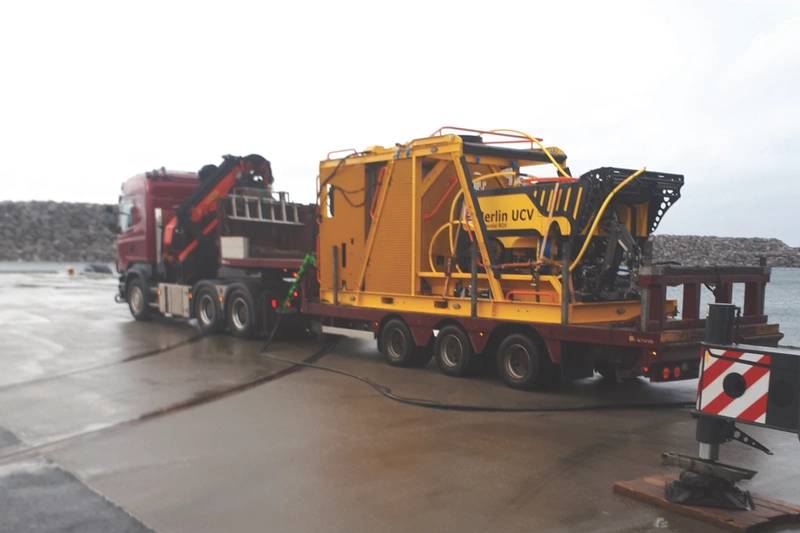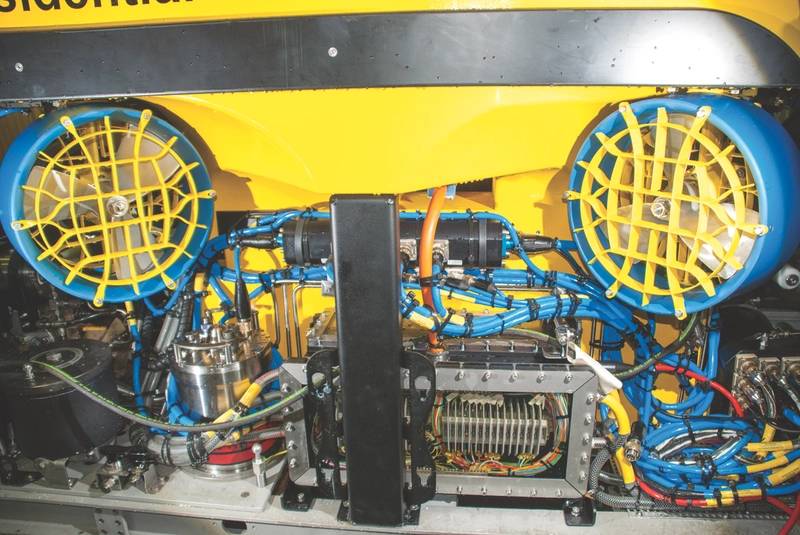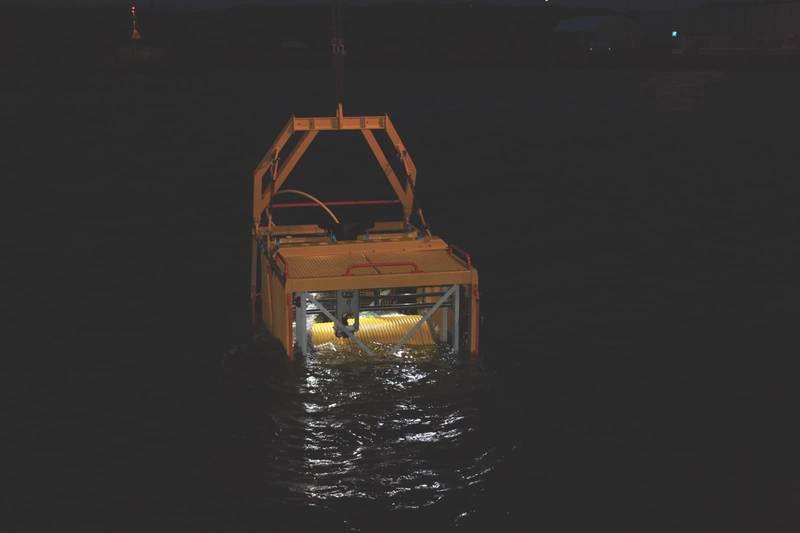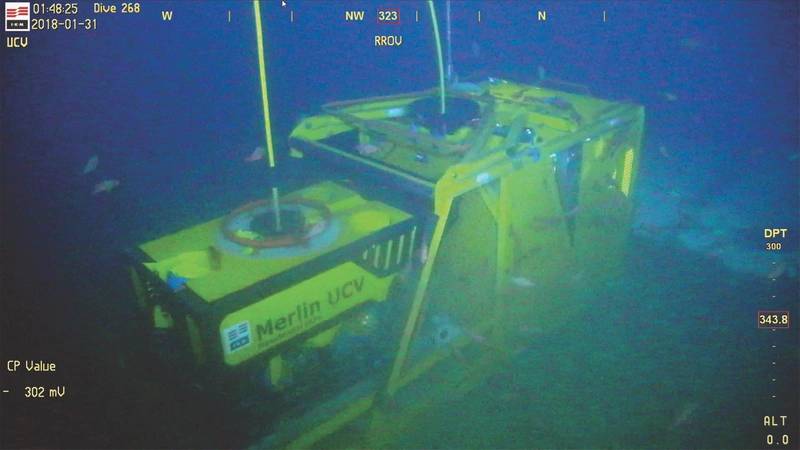
Remote operated vehicles (ROV) have become standard workhorses for the offshore industry, providing vital support to underwater operations, from drilling to servicing the latest subsea processing technologies. But, they’re now undergoing a transformation.
Above the surface, 4G telecommunications networks, which spread right across the UK and Norwegian North Seas, have made remote control from onshore a reality. Beneath the surface, “subsea GPS” and communications technologies are making navigation easier, allowing greater degrees of autonomy over longer distances, and enabling harvested data to be transmitted through water without wires. These capabilities free vehicles from the need to be accompanied by a support vessel, offer greater operational flexibility and mean their pilots can stay onshore, increasing safety and quality of life. As resident systems, deployed permanently, or semi-permanently subsea, vehicles can be ready for action, subsea, 24/7, supported from onshore – reducing cost and increasing safety and productivity.
A remote resident journey
IKM Subsea, based in Bryne, not far from Stavanger, Norway, has been taking these technologies onboard, developing and rolling out subsea resident vehicles. IKM’s journey towards the resident ROV started in 2007 and saw the company launch a work class ROV, the Merlin WR200, with an in-house designed tether management system (TMS) and launch and recovery systems (LARS), in 2010.
The WR200’s large open frame means it works well in strong currents and makes access for maintenance easy. But, because it’s big, it’s not always able to access some areas. So, in 2014, IKM Subsea started work on the electric Merlin ultra-compact vehicle (UCV) ROV. Launched in 2015, the Merlin UCV soon became the basis of IKM Subsea’s resident ROV, or R-ROV concept, and, in early 2018, the first Merlin UCV, complete with its own subsea cage (or garage) and TMS, was placed on the seabed at Norwegian operator Equinor’s Snorre B facility, offshore Norway. It’s been there ever since, available 24/7, piloted from on or offshore, on three-month long deployments, between which it undergoes maintenance.
“Some of the challenges to achieving this are technical, such as enabling remote control functionality,” says Ments Tore Møller, IKM Subsea’s Engineering Manager. This meant moving everything to Ethernet, for example, reducing the number of cables required. “It also meant adapting mechanical parts, such as the manipulators, so that they would need less maintenance. Traditionally, maintenance is weekly. We wanted to go to every three months, when the system would be brought up on deck.
“A key requirement has also been station keeping, to help with certain tasks, when you need the ROV to be stationary, and also path-follow mode, when the ROV can navigate itself, also as a backup mode of operation, if communication is lost, although this doesn’t happen often,” says Møller.
 IKM’s Merlin UCV R-ROV in its subsea garage, trailered and ready to be mobilized offshore. (Photo: IKM Subsea)
IKM’s Merlin UCV R-ROV in its subsea garage, trailered and ready to be mobilized offshore. (Photo: IKM Subsea)
Key to the Merlin UCV’s station keeping and navigational capability is a SPRINT-Nav, Sonardyne’s hybrid navigation instrument. IKM got access to the instrument through Norwegian underwater technology provider, Innova, who work closely with UK-based Sonardyne to support its customers in Norway.
SPRINT-Nav is built around highly robust and accurate Honeywell ring laser gyro (RLG) inertial sensors, in an inertial measurement unit (IMU), tightly coupled with a Sonardyne Syrinx Doppler velocity log (DVL), and an integrated high-performance pressure sensor. Tightly integrating raw sensor data from these sensors at a low level means higher levels of accuracy and reliability are achieved: ROVs can calculate their position for longer with less drift.
SPRINT-Nav is also fast to initialize, with no need for calibration maneuvers before getting to work or during work. This is because it runs two algorithms so that the inertial navigation system (INS) can instantly initialize from the attitude, heading reference system (AHRS) in the IMU. The fast initialization is also made possible by the RLG’s very deterministic characteristics, compared with other types of gyros. All of these things are making it a very popular instrument. Its performance and compact form factor also make it ideal for resident ROVs, autonomous underwater vehicles (AUVs) and hybrid vehicles.
 A core piece of hardware on the UCV is Sonardyne’s SPRINT-Nav hybrid navigation instrument. (Photo: Sonardyne)
A core piece of hardware on the UCV is Sonardyne’s SPRINT-Nav hybrid navigation instrument. (Photo: Sonardyne)
Big savings
Having a permanently deployed subsea ROV is a major benefit to operators as it’s always there, available, no matter what the weather conditions are, says Møller. “October through to March, many operational days can be wasted due to waiting on weather. Having a permanently deployed vehicle can save many millions of Kroner,” he says. IKM Subsea can operate these vehicles in up to 20-meter significant wave height; you couldn’t deploy an ROV from the deck in anywhere near that. “Being able to launch from subsea also saves half an hour each time,” he adds. “The SPRINT-Nav then initializes in just minutes. The ROV can also be operated from the control room onshore, so there’s availability, 24/7.”
There are further benefits, including time saving and extended weather window operations during marine riser disconnects and reconnections, says IKM Subsea’s Rolleiv Gangstad, who manages IKM Subsea’s onshore remote ROV control center in Bryne. “For drilling operations, every time you disconnect – and normally in a season there are about five disconnects – you save 1.35 million Kroner by being there already. To start up wells after a shutdown, normally it’s 12 hours if you have an ROV already in the water,” he says. “If you don’t, it can take 48 hours. That can amount to 38 million Kroner in lost production.”
Building a track record
From its onshore control center, IKM Subsea operates ROVs at early adopter Equinor’s Snorre B and Visund facilities. At Visund, there’s a Tiger observation class ROV and a work class Merlin WR200 ROV.
At Snorre B, there is a work class ROV with a standard “top hat” TMS, that’s lowered through the Snorre B moon pool, and the 3,000-meter-rated seabed deployed Merlin UCV R-ROV with SPRINT-Nav. The Merlin UCV is lowered via the platform crane to the one of four pre-created seafloor landing positions inside an “E-Cage”. The cage remains connected to the platform, for power and communications, via a tether on a lazy wave buoyancy system. From the cage, the R-ROV deploys on its own TMS, which enables excursions out to 1,000 meters. After three months, the ROV is retrieved to the platform, along with its cage, for maintenance.
 The garage is lowered to the seafloor where it houses the R-ROV for months at a time. (Photo: IKM Subsea)
The garage is lowered to the seafloor where it houses the R-ROV for months at a time. (Photo: IKM Subsea)
Both ROVs at Snorre B (as well as the ROVs at Visund) can be operated from the platform or from onshore via a fiber optic link. The onshore control center currently has two stations, one for Visund and one for Snorre B, although they can be interchanged and both could work on one field at the same time. Two pilots work from the onshore control room 24/7. Offshore, there are also two pilots on each facility – where normally, without the onshore support, there would be three.
At Snorre B, the SPRINT-Nav has been proving itself a very worthwhile investment. For the Merlin UCV R-ROV, IKM Subsea has its own navigation system, which takes in the navigation co-ordinates string from the SPRINT-Nav. This is used alongside a map of the subsea infrastructure. Where with previous systems, positioning had not been accurate or reliable, with SPRINT-Nav, Møller says the pilots have confidence that they know where the ROV is - and the ROV knows where it is. Its station keeping is also working very well and that’s thanks to SPRINT-Nav, he says, because it doesn’t drift very much.
“To be able to have remote control like this, we need station keeping,” Møller says. “If we lose communication, we should be able to put it in station keeping mode, so it’s just standing there until a local pilot can take over. While that’s not something that happens very often, when in the future we use more automatic or automated functions, where the ROV goes by itself, we will need this functionality.”
“Others INS’ just didn’t work,” he continues. “The pilots work with other systems and they know, they see, this works better. They see station keeping is better. It’s also helpful when we want to do something with the manipulator. At the moment, we just use left manipulator arm (Atlas) for simple work and a Schilling Rig Master arm for fine work. In station keeping mode, we have more flexibility.”
The majority of the work done by the Merlin UCV R-ROV is currently drilling and wells related, or opening valves for production, which means that most of the work is within the footprint of the Snorre B facility. Inspection work does see the ROV go out to about 300 meters to inspect where the marine risers are anchored to the seafloor with suction anchors. To navigate out to these, the pilots currently follow the riser along the seafloor. But, in bad visibility, having confidence in a navigation system to get you where you want to be is crucial.
This transformation in the ROV world is just starting. There is more that could be done. Some are looking to remove the tether, because survey work today is limited by the length of the tether from a fixed point. “You could remove the tether, but then you are limited by battery size,” Møller points out. “So, we may need different vehicles to do different things.” This could be something more like an AUV for survey, supported by SPRINT-Nav for navigation, and resident ROVs, where heavy vehicles with more capabilities are needed. “There are many different ways to do this,” adds Møller.
 During missions, the UCV travels out of its subsea garage to its work site before returning. (Photo: IKM Subsea)
During missions, the UCV travels out of its subsea garage to its work site before returning. (Photo: IKM Subsea)
Vehicles could be more flexible by enabling them to change parts subsea using inductive couplers, for example. Without a tether, a system could move from node to node (where it could recharge). Transponders, eg. Sonardyne’s Compatts, on the subsea cage would mean that the ROV’s return to its standby position in the cage could be automated, supported by anti-collision systems. Sonardyne’s BlueComm free space optical modem also allows for live video transmission through the water, which enables live remote control for untethered vehicles.
Another option is a cage with battery packs that could be deployed from a boat to where it’s needed and left there to do its work, with communications and control from onshore via a surface buoy and the 4G cellular network. “A vessel may carry four to five ROV systems, it would just be a delivery mechanism,” says Møller. Here, station keeping is even more crucial, as in this scenario there’s no offshore pilot as a backup.
Other areas that IKM Subsea is looking at include a digital twin of the subsea world. That would create the ideal navigation solution, says Møller. SPRINT-Nav would provide the position alongside a 3D sonar, which could recreate the subsea environment. Furthermore, if communications or the sonar drops out, SPRINT-Nav can continue calculating where the ROV is. A digital twin would also make simulating procedures and training easier and more realistic and reduce time on the real system.
Next steps include more automation. However, this is partly a human challenge. ROV pilots are used to performing these tasks themselves. They’re used to being able to see and feel where they need to be in the water and prefer that to relying on a machine. But, change is happening, says Møller, and more will come as tasks can be automated, including using machine vision technologies, eg. you could just message the vehicle and say, “Go to west station #2 and check situation on this valve.”
Back at Bryne, where IKM Subsea also builds tests and maintains its ROVs and R-ROVs, two new UCVs are being built for AKOFS Offshore. These will be vessel-deployed systems, both fitted with SPRINT-Navs. Additional remote control stations are also being built and fitted out.
IKM Subsea is also working on an electric manipulator for its electric R-ROV as well as other ways to make these systems more efficient, so that battery life can be extended. This includes an electric TMS, alternative propellers and batteries, and power management systems.
With interest for seabed deployed systems increasing, more such systems will appear in the market and they will evolve, support by navigation and communication technologies.
The Authors
Alan MacDonald is Sales Manager at Sonardyne. Sven Eivind Torkildsen is Sales Manager at Innova.